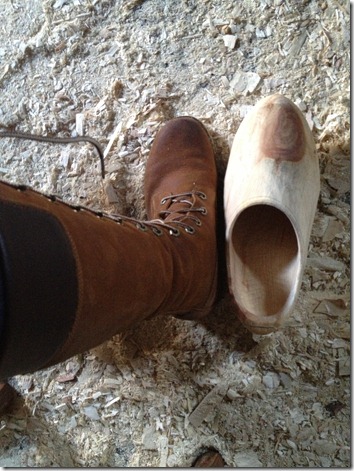After a day spent on the mountains, fully immersed in wild nature, I was forced to deal with mobile phone operators and Codice Fiscale ID-numebr issues – the last something you cannot live without when you spend more than one or two weeks in Italy and strictly bound with everything you buy, mobile phone cards included. A nightmare when you live in a small village in the mountains!
To reach the goal I need to drive to the nearest city: Aosta, one hour by car from Champoluc, and make a visit to all the offices in one day to be efficient and be able to do more than one of the bureaucratic tasks i have to, in order not to drive the road again the next day. Cues and very arrogant employees are part of the adventure of today.
Extremely satisfied because of the positive exit of my mission, I started to look around me driving on the way back to my small village.
The valley stretches as a snake between high mountain sides and was originally built by the boring force of the flood Dora Baltea, which source on the Mont Blanc. There around me on the motorway I saw the white tops I am used to this time of the year, but also ochre coloured fields and wine yards surrounding castles and small stoney towns from the Middle Age. This frontier area has been inhabited permanently for thousands of years, and many different people have passed through ton their more or less pacific way from the North to the South and viceversa.
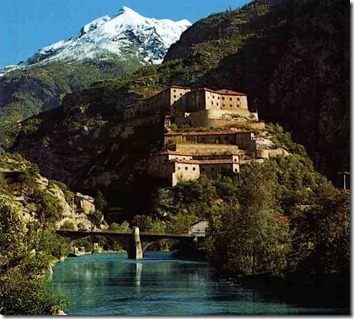
Aosta Valley has an ancient history that we tourists of the snow and the peaks too seldom remember to approach under our trips. This low land I traversed is the place of memory where Roman emperors leaved their signs but also Hannibal, Napoleon and the hundreds of Bishops and Princes, who ruled these land in between.
The Alps are a frontier, a border, but also a passage.
What does it mean for the land and the people living here?
It means that there are influences by many different cultures and an openness to that and in the same time there is a situation of closeness and diffidence, depending on the times: peace or war. Obviously it has not always taken one hour to get to Aosta from Champoluc, however I complain. It took days and weeks and sometimes months to get through this valley especially if you had an army with you!
And that means that people living here met our historical ancestors – the tourists of the past – for longer and more intense intercourses than today, with the natural consequences of that: marriages, mix of experiences and gears.
So what could be less strange than people from the Aosta Valley that manifest this great incongruence between being secluded by huge mountain ranges, on one hand, and meeting all kind of people on the flow through the passes?
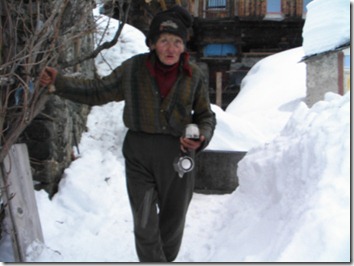
I have met Dina, the old lady who never moved from her tiny house in the small village of Frantze at 2000 meters height, but who opened her door for everybody passing on the trail before it. She had no TV or internet, but was always updated about what happened in the world. She had no teeth, but she was pictured in an award winning documentary movie by a Belgian movie maker.
People like Dina are bond to their territory by ages and don't appreciate the complications of modern life. If you only saw her without talking to her, you could imagine she was a freaked old witch, by her outlook. But she had made a choice, staying true to her life, and was actually interested in the ones who passed by, wherever they came from. Really interested. On the other hand she did not wish to change her poverty and her secluded life with the life of us "citizens" or even of her fellows down in the touristic resorts of the Valley.
This story could be nearly the same for many different people in Aosta Valley, and I am sure even in many other similar areas of the world: mountains, passes. Borders and passages. There is probably more similarities between people in the Himalayas or the Andes and in the Alps, than there is between them and people living in the cities, even if their are of the same nation.
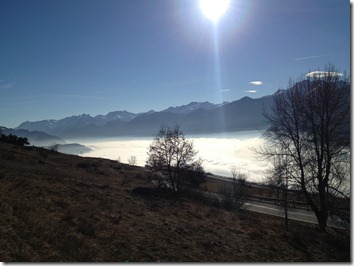
Another person I met is Jonny, in Trochey, in the valley of Ayas. He is a Buddhist and a "sabotier", an artisan who makes the traditional wooden shoes of this place, the Sabot, or Zocche as they are called here.
His father was making the same thing, when he did not work with the cattle during summertime. It is a winter kind of occupation for the farmers, when snow covers the land and it is time to stay inside. You cannot make a living off this art craft, even if they made a really big business of this in 1600. The little valley of Ayas exported their Zocche all over Europe! Who came first? The Duches or the Ayassins with the sabot?
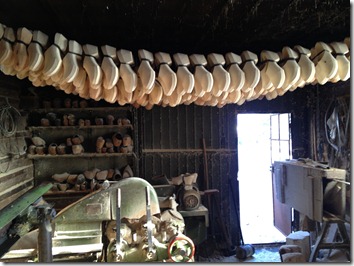
Jonny anyway is extremely shy and introverted, and does not want to be photographed. I am welcome to take pictures in his work place though. Hundreds of Zocche hang from the ceiling, very beautifully ordered, but not sold yet - no marketing here, not even a sign to tell the passers by they can buy the shoes in Jonny's shop. He lives together with his mother in their family house, in the same valley of Chjampoluc under the Monterosa slopes but his dream is to go to Burma to learn more about Buddha.
A paradox, yes, but not so unusual in these lands.
People are proud of their origins and are sometimes attached to their roots in a negative way. They are diffident against foreigners, who often came in the past to take more than to give during wars and exploitation of natural resources, from the Romans who built their gold mines to the Italian state who built their craftworks to exploit water driven energy, for example.
Today the flow is more of tourists on vacation than of conquistadores, but as before we come to the mountains for our own interests, because of the skiing or the beauty of summer. We do not to know the habits of the people who live here. I have spend more than 50 years in the Valley, but I still cannot understand the local language! Exactly as if this was a colony of the past, what is the difference?
